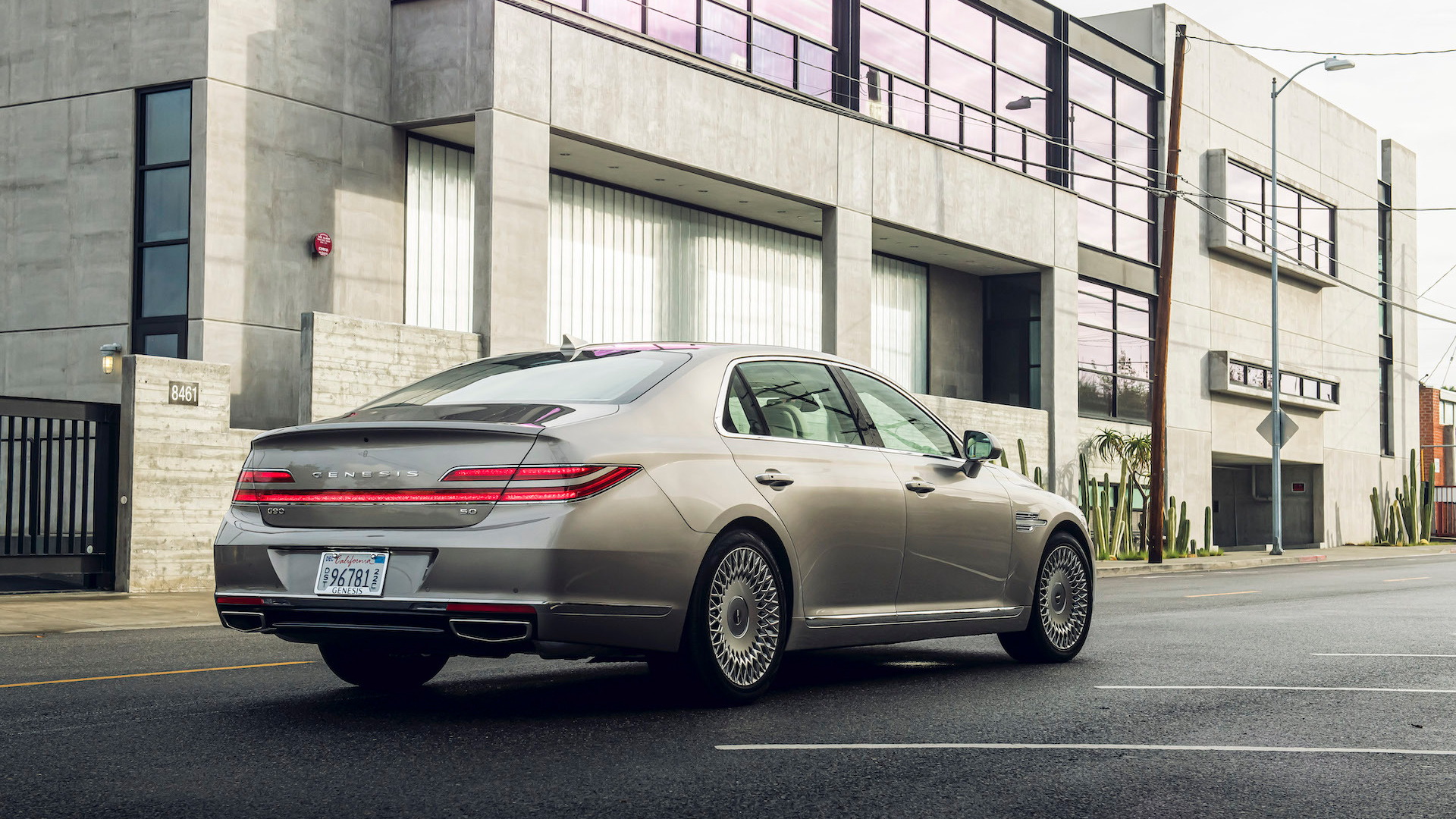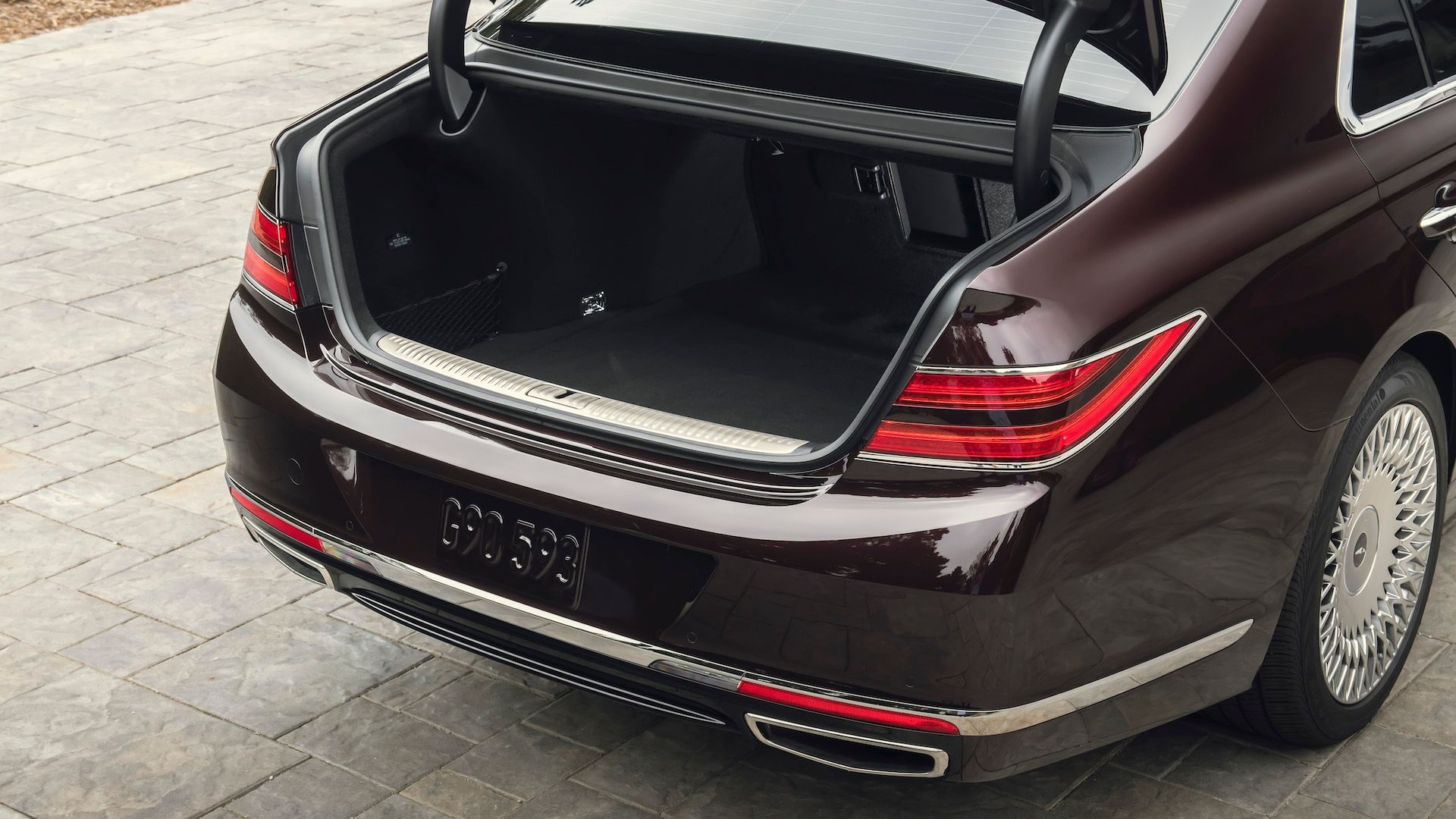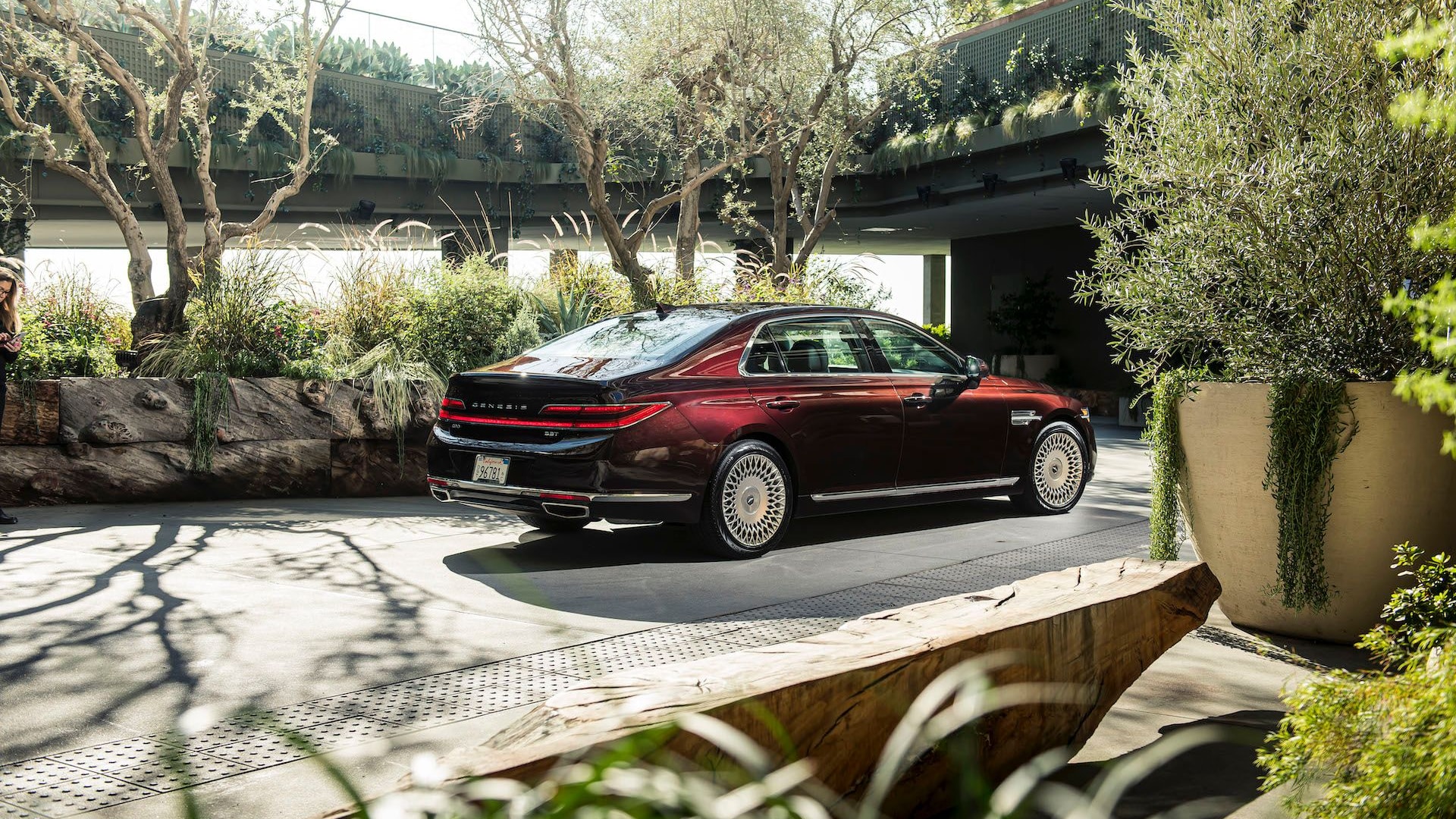Since it debuted for 2016, the Genesis G90 has followed the tried-and-true recipe for a flagship luxury sedan: rear-wheel-drive layout, smooth ride, spacious interior, and high-quality materials. But, as any decent chef will tell you, a good recipe is nothing without the proper presentation, and that’s something the G90 has been lacking.
In a bid to make the G90 appealing to traditional luxury buyers , Genesis gave the G90 typically restrained luxury car styling when it was introduced for the 2017 model year. That resulted in a derivative and ultimately bland design. But Genesis spices things up with fresh styling for its top-end model, along with a dash of new technology, for 2020. Curious to see if those new ingredients make for a better G90, I packed my bags for Southern California to sample the new G90.

2020 Genesis G90
Dressed to the nines
Despite its new looks, the 2020 Genesis G90 isn’t entirely new. Instead, it represents a mid-cycle refresh that uses many carry-over bits. The exterior is not among them. Replacing the staid styling of the old car is a new exterior design that manages to be both bold and beautiful.
That starts up front with a new over-sized grille that would make even a modern BMW feel inadequate. Despite its gigantic size, the new grille, with its “G-Matrix” mesh design, works on the G90.
That’s thanks in large part to Genesis’ commitment to giving the G90 a distinctive look. Genesis designers also penned a new lower bumper, a reshaped hood, and revised fenders that incorporate a dual-eyeslit headlight design. If you look closely, you’ll notice the G90’s new LED lighting elements incorporate the same G-Matrix pattern as the grille, which is a nice little detail and one that is repeated throughout the car.
The 2020 G90 comes standard with 19-inch wheels that use a basket-weave pattern inspired by the car’s grille. These gorgeous wheels really enhance the G90’s presence, but if for some reason you’re not a fan, the 2019 G90’s wheels are a no-cost option.
Genesis revises the rear as well. Taillights now consist of thin LED strips with body color between, giving the G90 a high-end and, more importantly, unique look. Again the G-Matrix pattern is repeated in the taillights, and it imparts an almost jeweled appearance when lit.
The Genesis name is prominently sprawled across the G90’s restyled decklid in place of a simple badge. The width of the badge works with the G90’s new design language, but that’s not the reason Genesis put it there. Genesis is still trying to make a name for itself in the luxury market, and many people simply don’t recognize its winged badge. By using the Genesis name instead, the automaker is hoping to increase brand awareness, even if it’s one traffic jam at a time.
Rounding out the rear end changes are a new bumper that now houses the license plate, and new-look dual exhaust outlets that use the same shield shape as the front grille.
In all, the look so bold it might turn off some buyers. However, it’s cohesive and it looks good out on the street among a sea of me-too car designs. I like it and feel it could draw more buyers to the brand.

2020 Genesis G90

2020 Genesis G90

2020 Genesis G90
The details
Like before, the 2020 Genesis G90 rides on a 124.4-inch wheelbase, netting 113.2 cubic-feet of space for passengers and 15.7 cubic-feet in the trunk for their cargo. The G90’s trunk is a few cubic feet smaller than its closest rivals, but the cargo area is easy to access thanks to a smart-open feature that will automatically pop the trunk if you stand behind the vehicle with the keyfob in your pocket.
Powertrains are also carryover. The standard twin-turbocharged 3.3-liter V-6 develops 365 horsepower and 376 pound-feet of torque and is paired with an 8-speed automatic transmission and rear-wheel drive. A naturally aspirated 5.0-liter V-8 with 420 horsepower and 383 pound-feet of torque is optional. It uses the same 8-speed automatic and rear-wheel-drive layout. Both engines can be equipped with all-wheel drive for an additional charge.
The overall interior design is also the same as before, but the details have changed. Genesis now offers five colors of leather upholstery instead of just beige, along with four new open-pore wood trim options, allowing for greater customization.
Colors and trims aside, there’s only one way to spec a 2020 G90—fully loaded. Features are standard across the range, which is a refreshing departure from the dizzying array of optional equipment typically offered by luxury automakers.
Buyers will be happy to know Genesis outfits the G90 with more standard features for 2020. For starters, the 12.3-inch infotainment system now uses a touchscreen and Android Auto and Apple CarPlay compatibility are now standard. It also adds Mirror Link, which projects elements of your smartphone’s screen onto the infotainment screen, and it can now receive over-the-air updates, which eliminates the need to visit the dealership each time new software rolls out.
On the safety front, the 2020 G90 gains several new features, including a lane-centering version of active lane control for highway driving, forward-collision warnings that now detect bicyclists, and a rear collision avoidance system that will automatically bring the car to a stop if it detects an object behind the vehicle while in reverse. Also new for 2020 is a safe exit assist system that can alert occupants of an oncoming object when opening a door.
Those systems join the G90’s already comprehensive safety suite that includes technology like adaptive cruise control, automatic emergency braking, and blind-spot monitors that use side-mounted cameras to project a view of the driver’s blind spots in the central gauge display when a turn signal is activated.

2020 Genesis G90

2020 Genesis G90

2020 Genesis G90
Drive time
Changes to the G90’s hardware are minor, so the driving feel is largely unchanged. A smooth, comfortable ride teams with light steering in most driving modes. Cornering prowess isn’t the G90’s focus, but handling is surefooted without the floaty feeling you might expect from a long-wheelbase luxury sedan. For those feeling a bit frisky, a Sport mode available via a center console-mounted button increases steering weight for more stability and seat bolstering so occupants stay in place during spirited driving.
There isn’t a bad engine choice. The optional V-8 is a few ticks faster to 60 mph than the twin-turbo V-6, but neither engine struggles to slingshot the G90 down a highway onramp. The only discernible differences between the two engines are in stop-and-got city driving, where the effortless power of the V-8 makes for a smoother driving experience and the V-8’s throaty growl, which sounds more sophisticated.
But that effortless power is costlier at the pump. A V-8-powered G90 with rear-wheel drive is rated at 16 mpg city and 24 mpg highway, and optional all-wheel drive dings both figures by 1 mpg. The G90 V-6, meanwhile, achieves 17/25 mpg regardless of driveline.
For highway cruising, the G90’s new Lane Follow Assist is a welcome addition. The system does a good job of keeping the vehicle centered in its lane and, when combined with adaptive cruise control, contributes to a relaxed driving experience befitting a flagship sedan.
Although not new, we found the G90’s camera-based blind-spot monitors to be useful. Activating a turn signal automatically projects a camera feed from that side of the car onto a color display in the middle of the gauge cluster, eliminating the need for a quick glance over your shoulder before making a lane change.

2020 Genesis G90
Despite that neat trick, the G90’s gauge cluster is actually its biggest letdown. While other flagship luxury sedans use fully configurable LCD displays, the G90 still makes do with a mostly analog setup. That might seem minor, but it really does make the G90 feel downmarket compared to the the likes of Mercedes-Benz and BMW, especially considering it’s something you're faced with every time time behind the wheel.
Choose any other seat in the G90 and you’ll be hard pressed to complain. Materials, along with fit-and-finish, are top notch, and the G90’s seats are supremely comfortable, especially up front. All seats are power-adjustable (the driver gets 22-way adjustments), and every occupant but the unlike rear middle passenger is further spoiled by heated and ventilated seating surfaces.
Pricing for the 2020 G90 hasn’t been announced, but Genesis promises MSRPs will stay close to those of the 2019 model. That should mean a starting price of about $70,000 for a V-6 model, and $75,000 for a G90 V-8. The 2020 Genesis G90 is scheduled to go on sale by the end of December.

2020 Genesis G90
Bottom line
It’s not often that a styling change can make for a radically improved car, but that’s just the case with the 2020 Genesis G90. With its new design, the G90 is appealing for reasons beyond its sensible pricing and smooth, comfortable ride. There are still a few interior details to work out—chief among them that analog gauge cluster—but the 2020 G90 represents a major step forward for the nameplate, and the Genesis brand as a whole. Sometimes better presentation makes for a tastier dish.
Genesis provided travel and lodging to Internet Brands Automotive to bring you this firsthand report.








